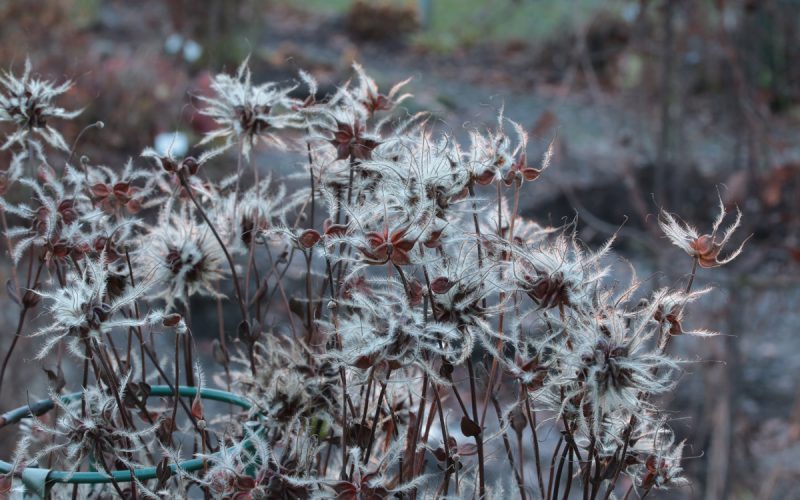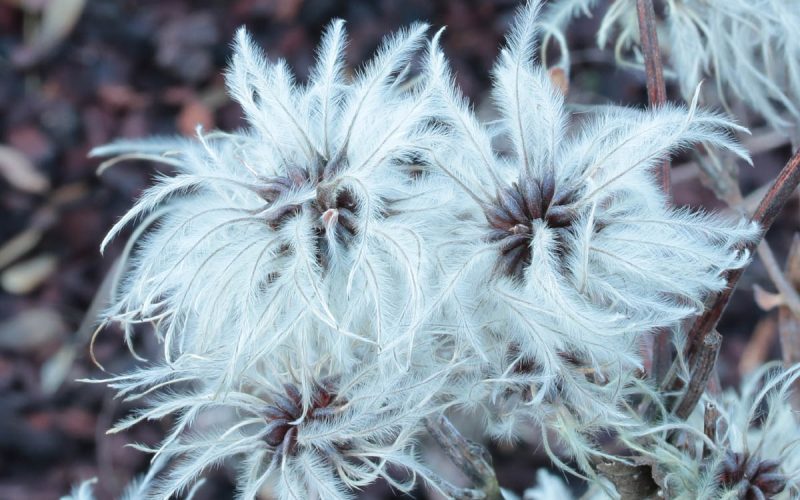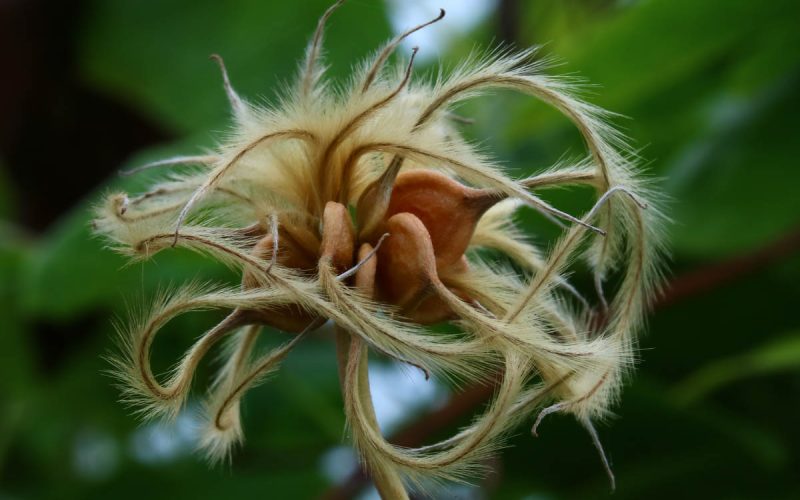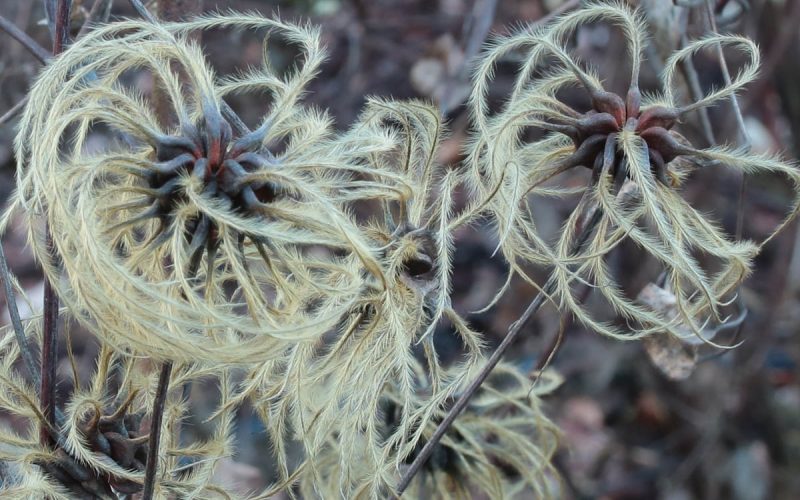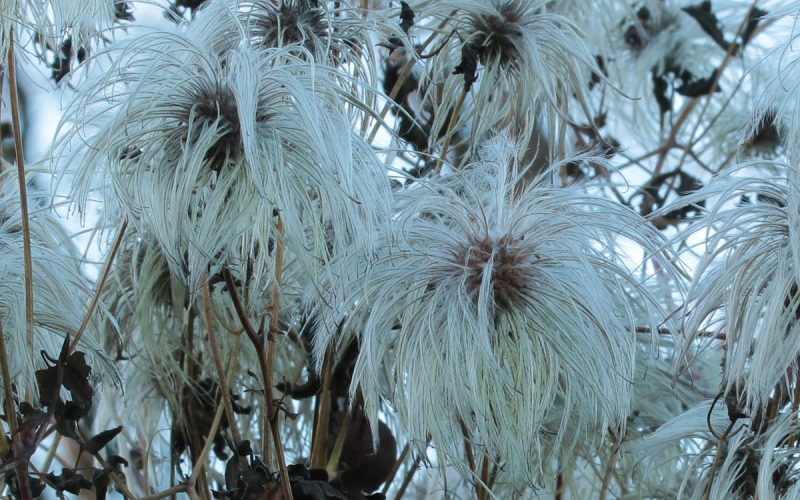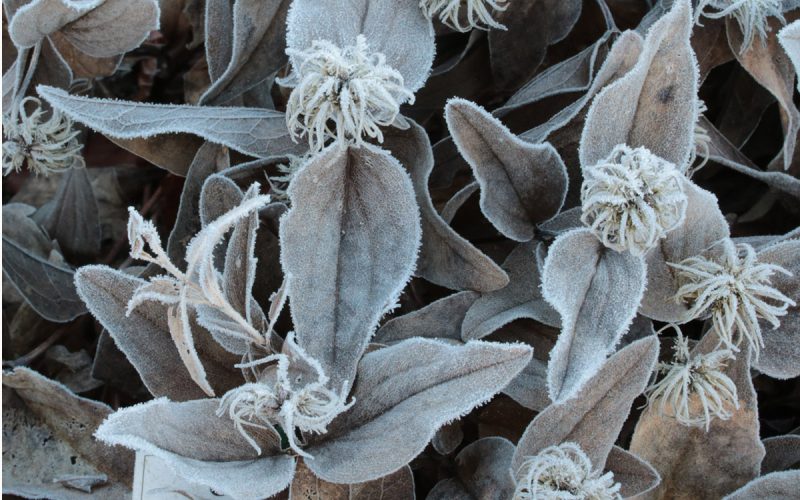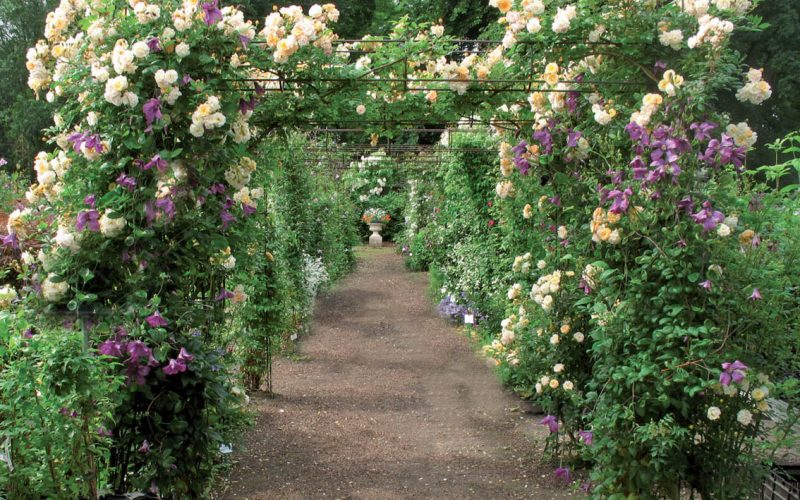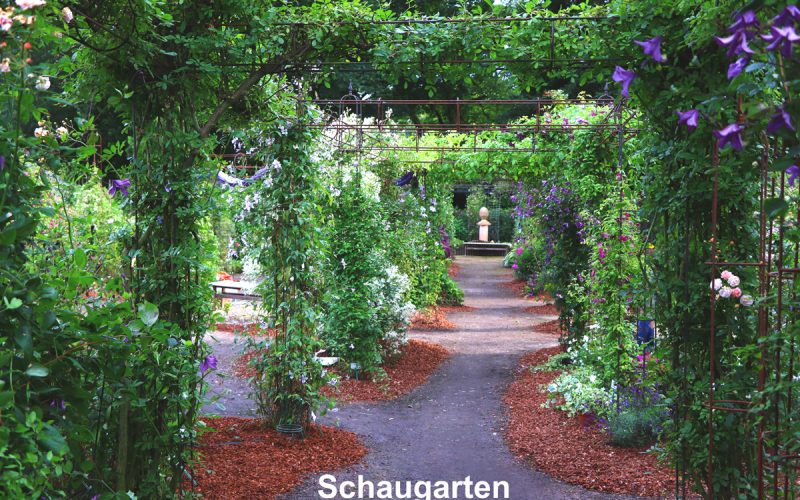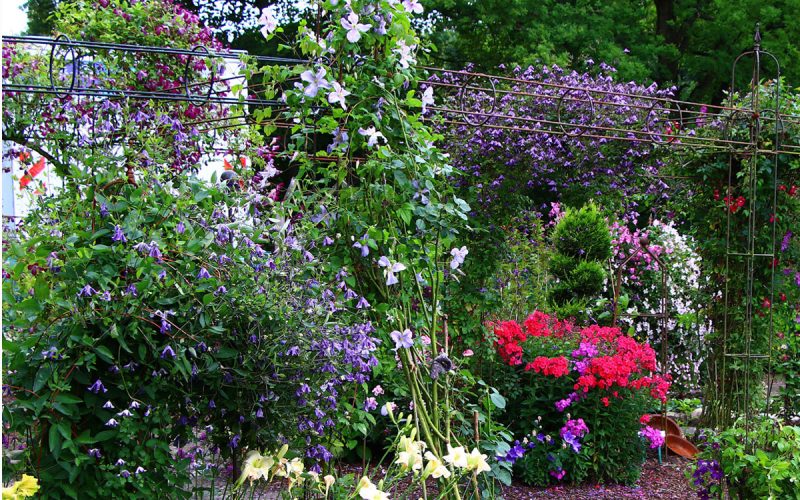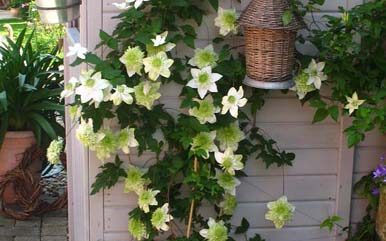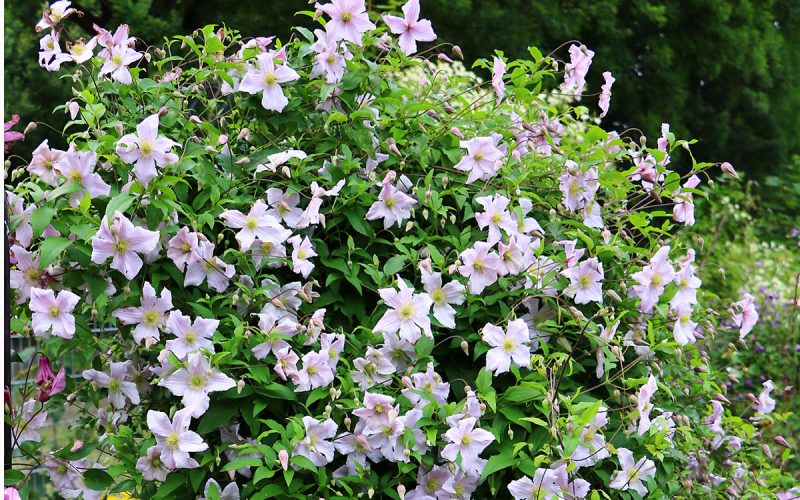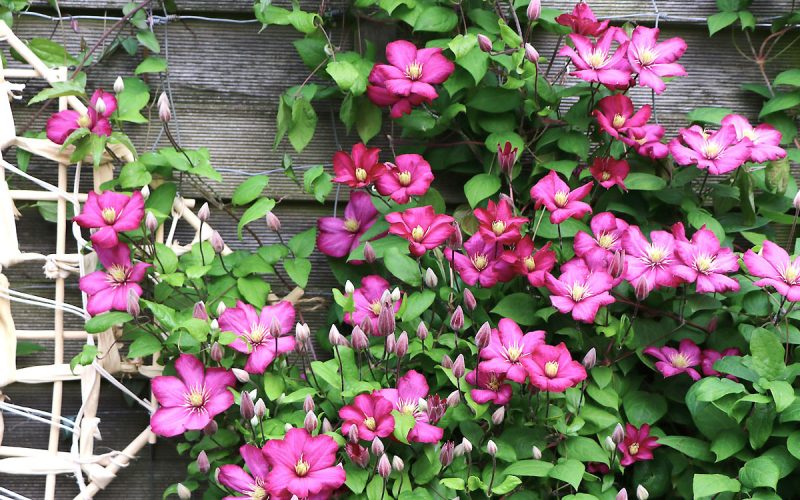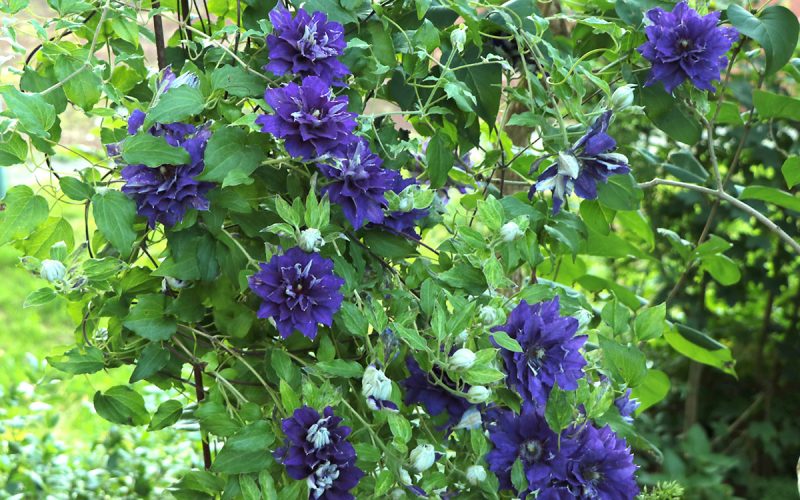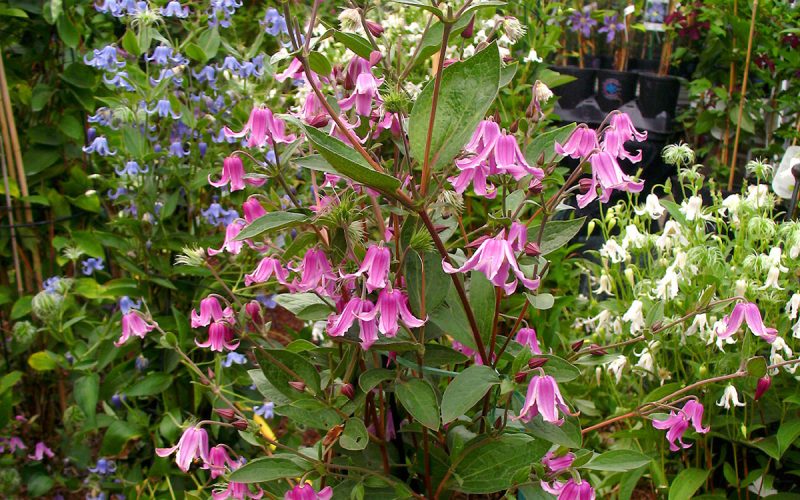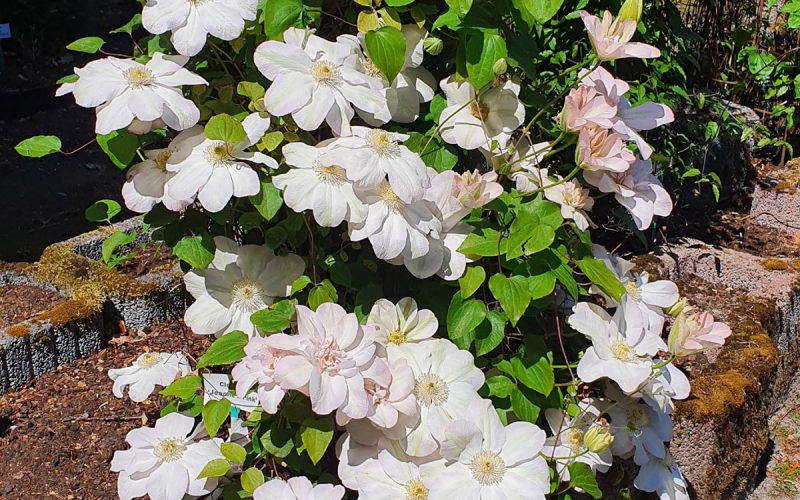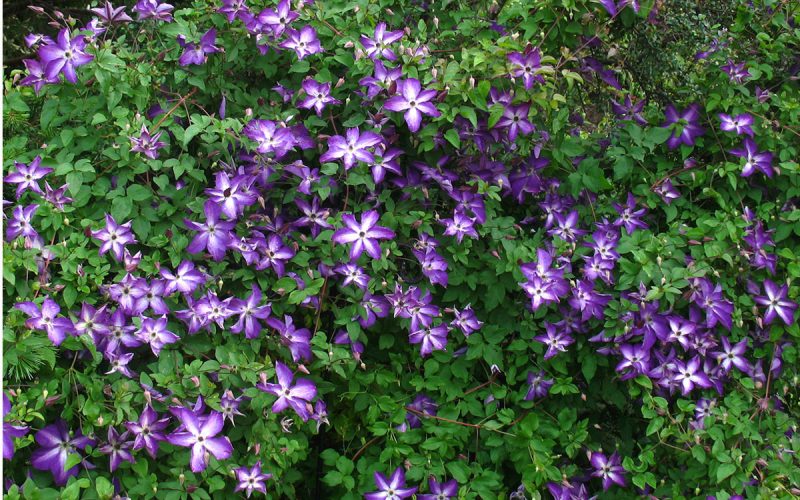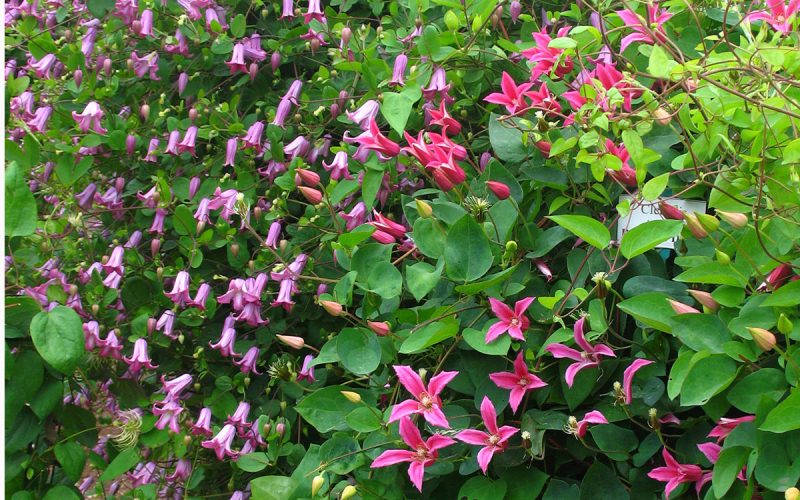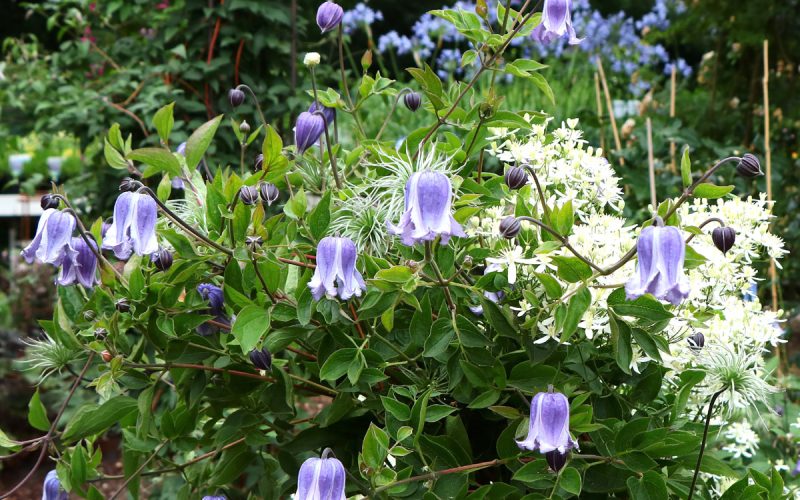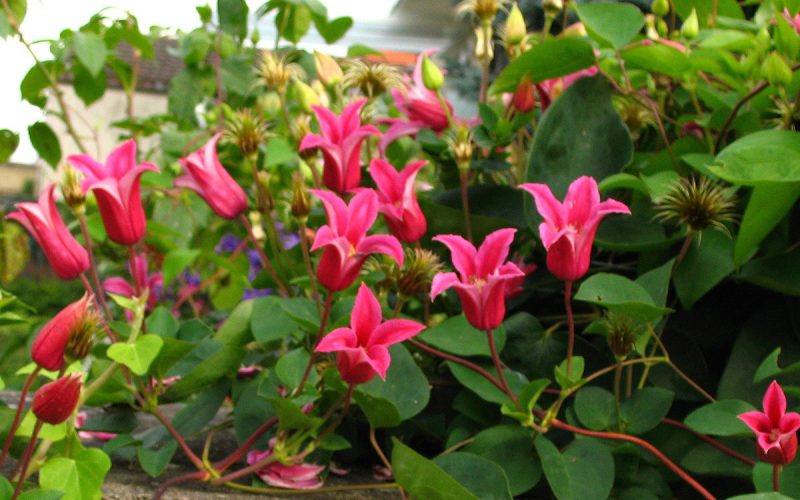Welcome to Clematiskulturen F.M.Westphal.
Online ordering now possible again! Fast delivery.
+++ New on our site: Guide and About Clematis +++
On-site sales in the nursery Mon-Fri 9:00 – 18:00, Sat 9:00 – 16:00 – Open continuously for you!
Dear Clematis Friends, Dear Garden Friends,
take advantage of the many opportunities offered by our extensive clematis assortment, especially now in difficult times. Clematis can do much more than just “climb up”!
Diversity, species and climate protection are important to us and we make an active contribution to this!
At this point we would like to draw your attention to a special clematis!
Clematis ‘Paul Farges or other names like: fargesioides or Summer Snow
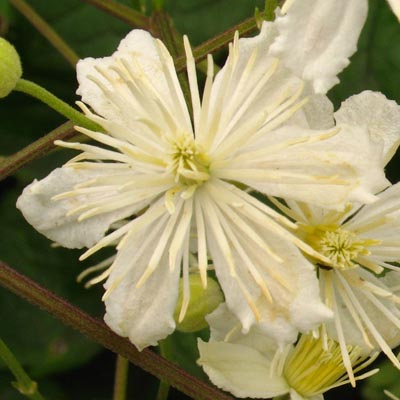
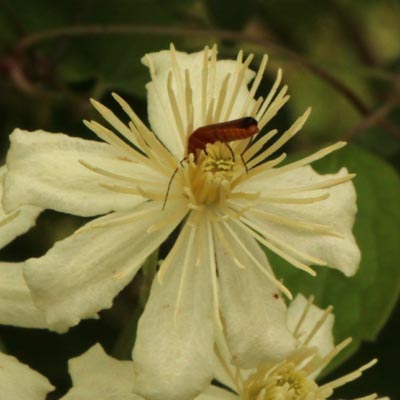


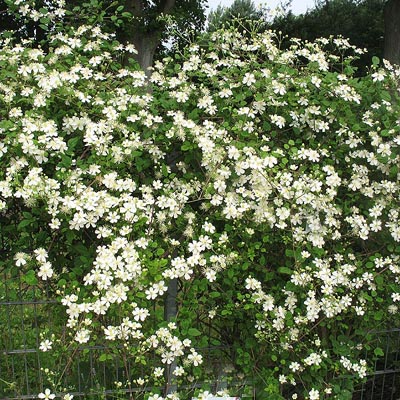
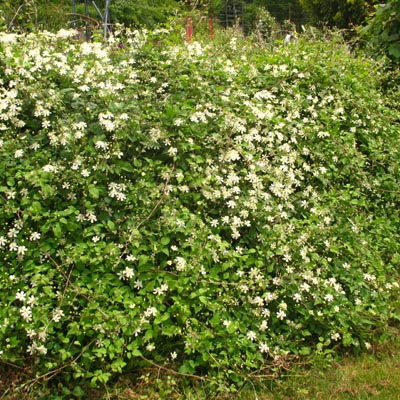
This clematis variety is unbeatable and indispensable in many respects.
The outstanding features are: Absolutely hardy, healthy as a horse and never sick, long flowering period from June to September/October, neutral cream-white color, insect and bee friendly. Vigorous, dense and uniform growth. Provides shelter and nesting opportunities for our songbirds. Is not invasive! It does not attack the masonry and can withstand dry periods for a long time.
Modern architecture today strives to green the facades. Similarly, for noise barriers and fences. Paul Farges is perfectly suited. Here architects and civil engineers should become wide awake!
Other clematis that may be used similarly are: Jouiniana preacox, jouiniana Mrs. Robert Brydon, jouiniana Sander, Jasper, vitalba, gouriana, Anita, orientalis and tangutica/tibetana.
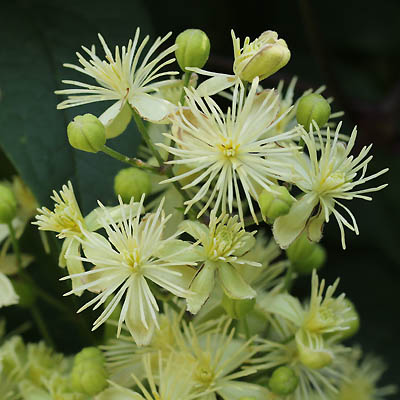
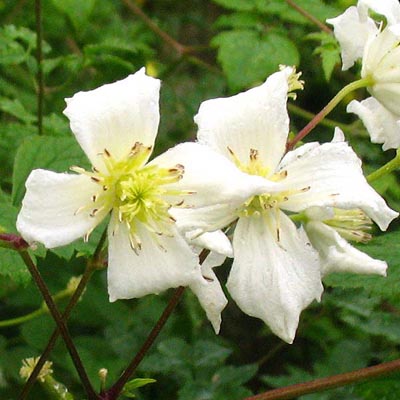
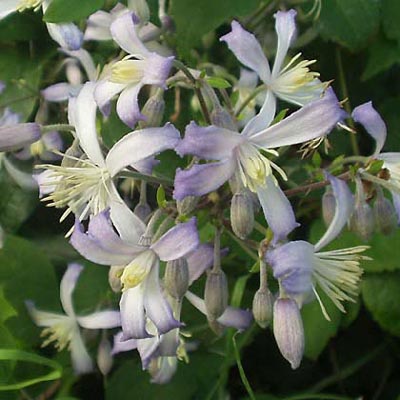
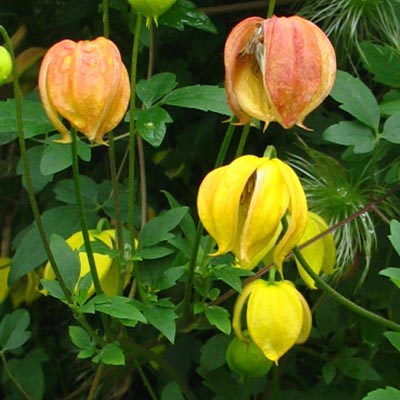
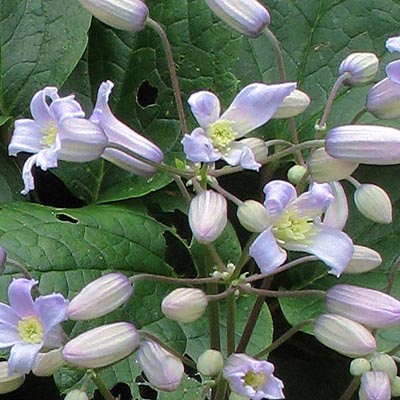
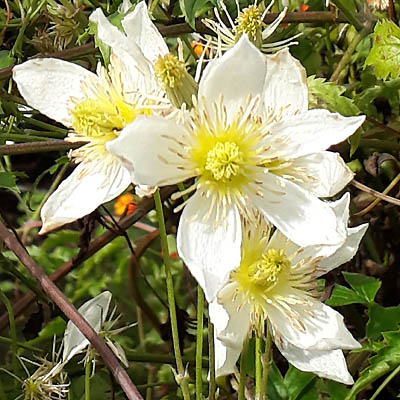
In this context, it is also worth mentioning the green roof. Clematis can also be used here. Especially suitable are the low clematis such as: integrifolia, coactilis and ochroleuca. They grow compactly without climbing help, resting on the soil or further green roof and do not grow higher than 15cm. Bees, bumblebees and other insects find nectar and pollen here.
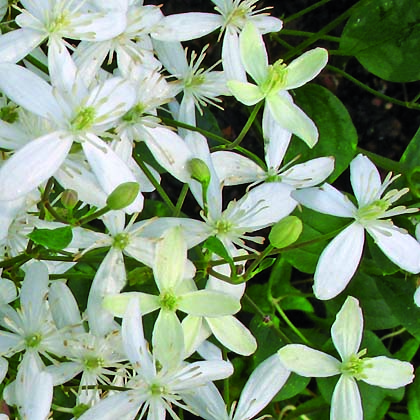
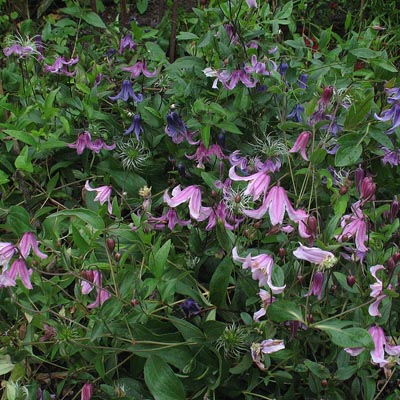

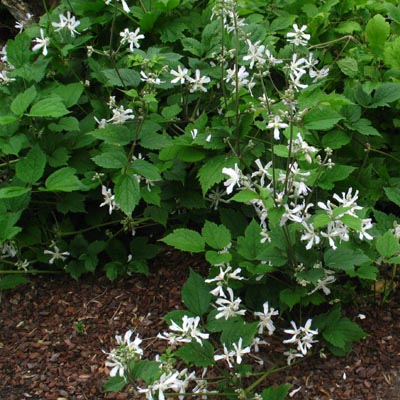
Palisades retaining walls and raised beds
Here, too, you can use Clematis integrifolia or others.
They can hang down between 30-120 cm.

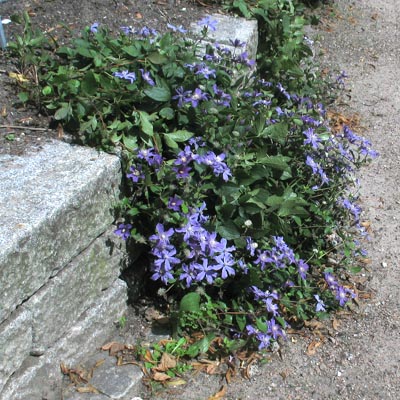
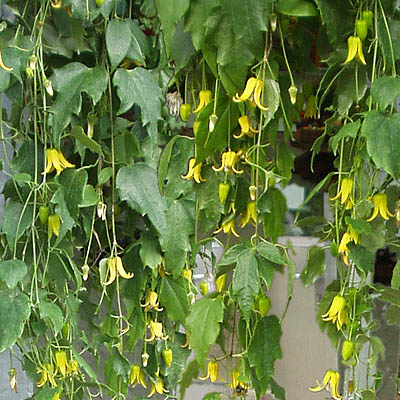
Fences, hedges and trees
Any chain-link fence or the familiar double-rail fences provide ideal conditions for all climbing clematis to cling to. The height of the fence plays a minor role. Once clematis have reached the crown of the fence and grow above it, then it continues horizontally or droop again. Hedges and trees can be “spiced up” with clematis, they bring additional color. Many combinations are possible here
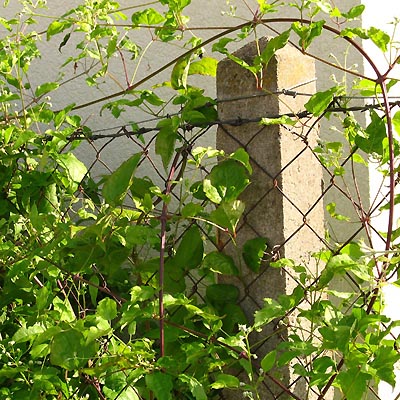
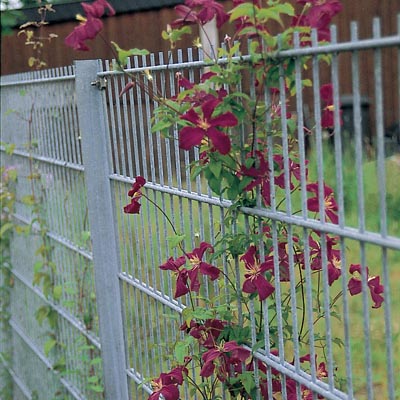
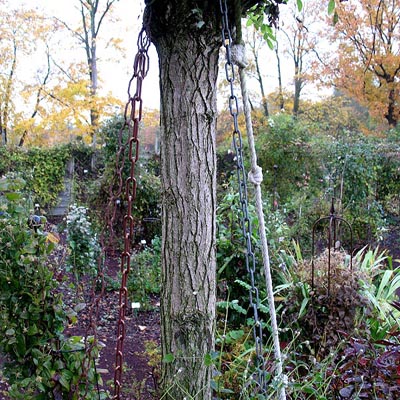
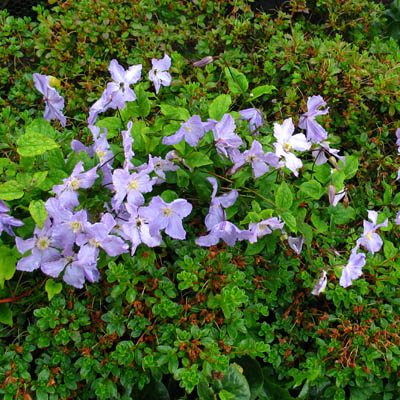
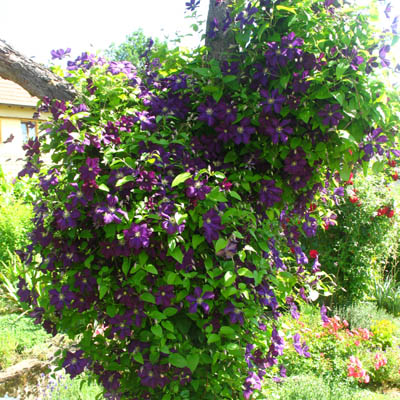
Bees, bumblebees and other insects
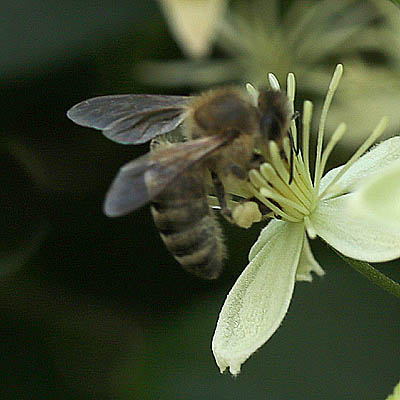
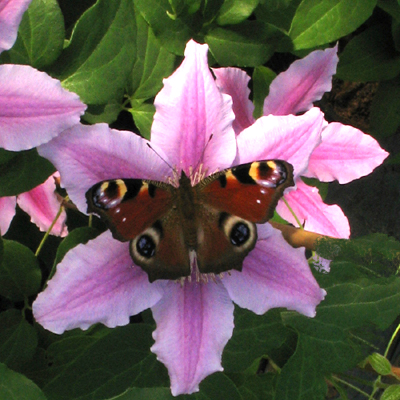
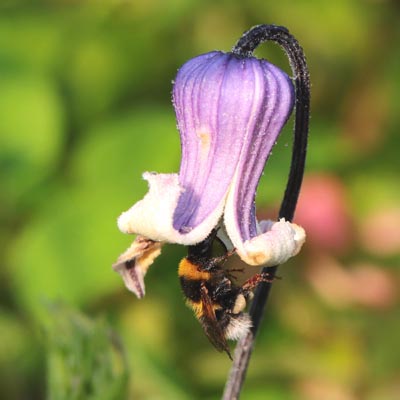
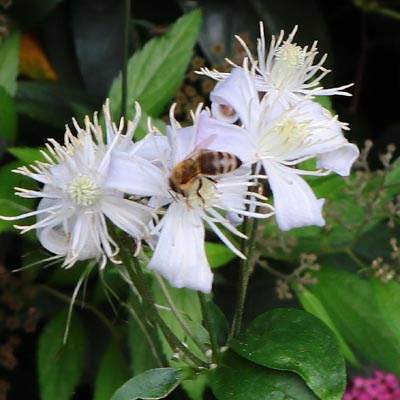
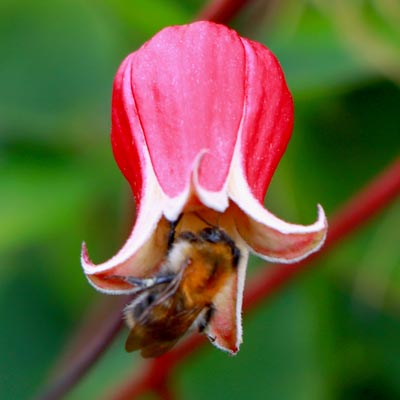
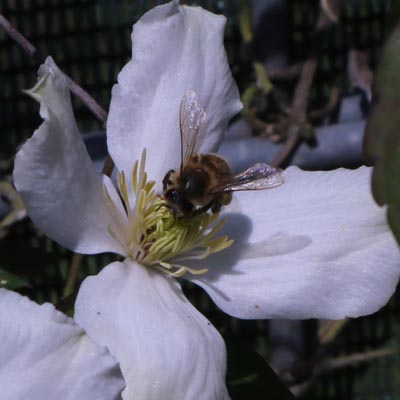
Species conservation is essential and insects and their forage plants play a large part in this. Many of the small-flowered clematis have a lot to offer here! The families of perennial clematis, and here in particular Integrifolias, magically attract insects. Furthermore, the clematis from the Texensis family should be mentioned, and others.
Four seasons with clematis
Clematis bloom in all four seasons. Fortunately, the flowering seasons overlap, making it possible to have a seamless flowering season 365 days a year.
March, April and May
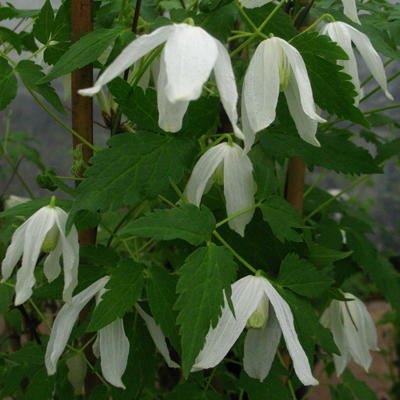
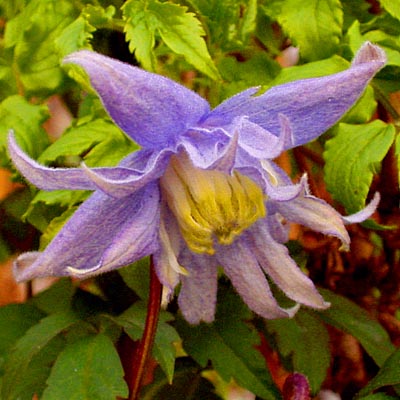
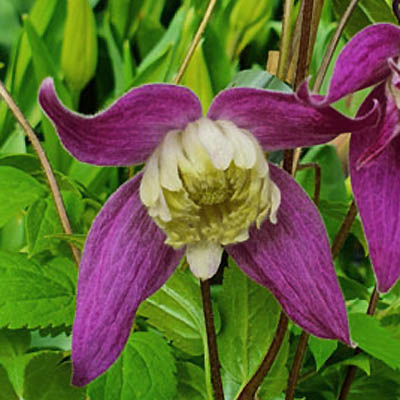
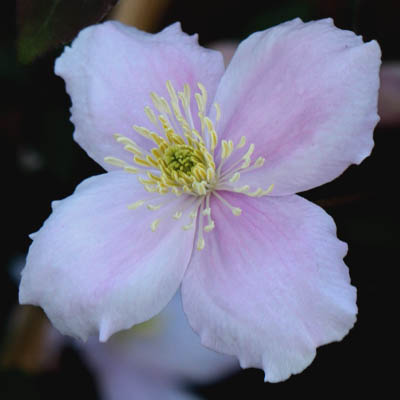
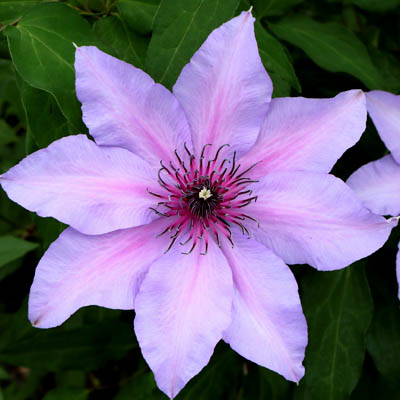
Clematis sibirica Alba bloom as early as March, followed by Clematis alpina, C. macropetala in April and finally C. koreana in May. Clematis montana also bloom in May and June. The large-flowered, early-flowering hybrids also bloom for the first time in May.
June, July, August and September
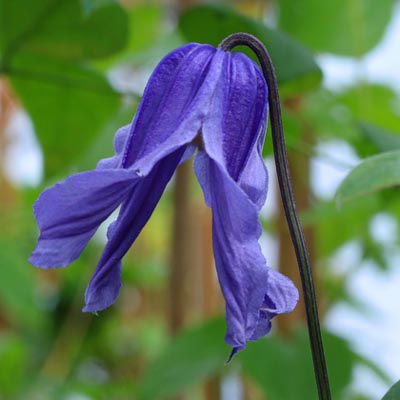
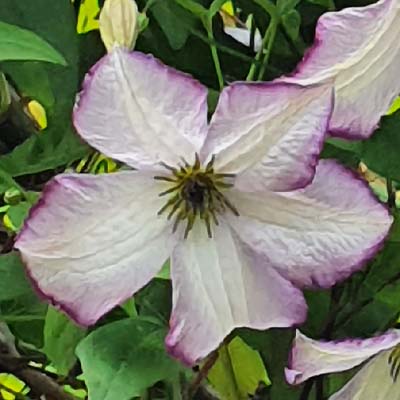
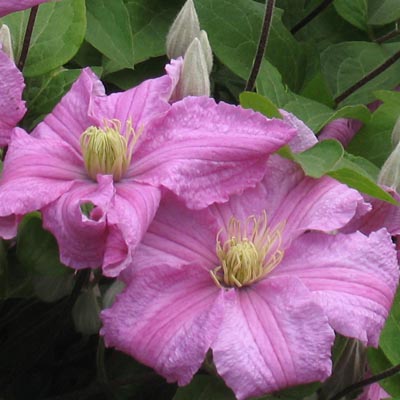

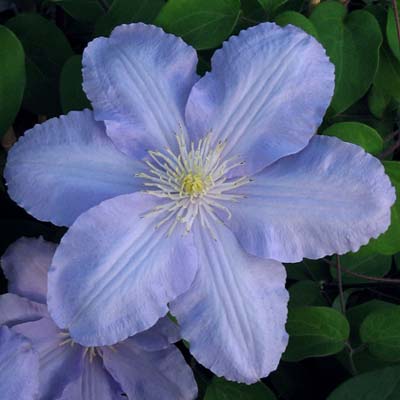
Clematis integrifolia begin to bloom in early June. From the middle of June, Clematis viticella bloom. Summer-flowering hybrids and Clematis texensis follow in July. From August large-flowered hybrids bloom the second time. Special species such as Clematis rehderiana or flammula rubramarginata are also now beginning their flowering season.
August, September, October and November
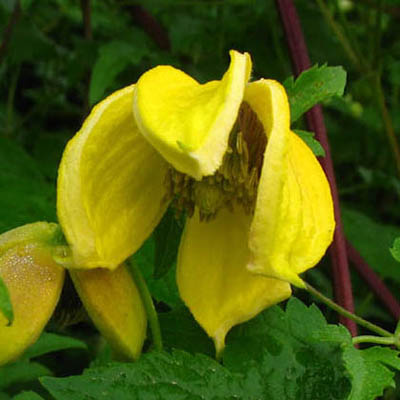

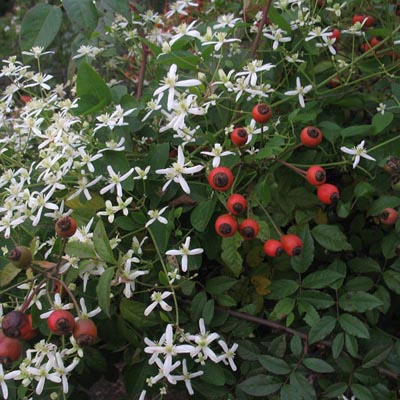
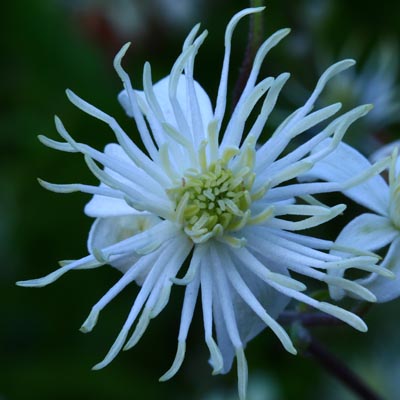
In September, October and November Clematis orientalis have their peak bloom. In this period also bloom Clematis chinensis and maximowiciana (German = Oktoberwaldrebe).
November, December, January and February (including winter garden)
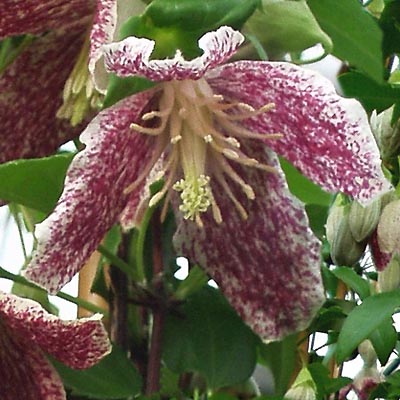
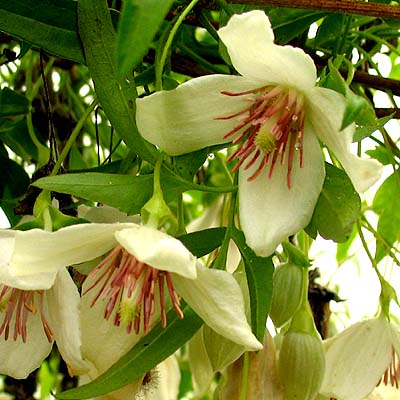
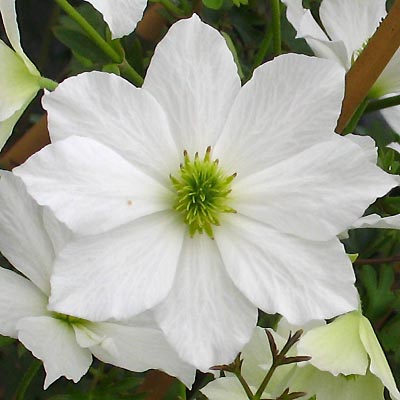
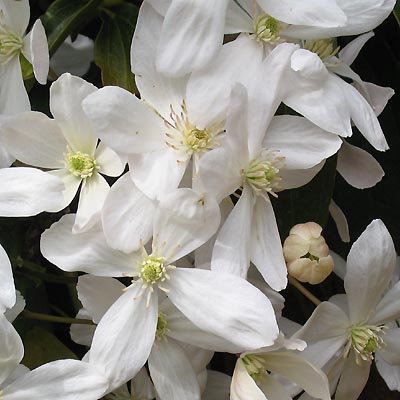
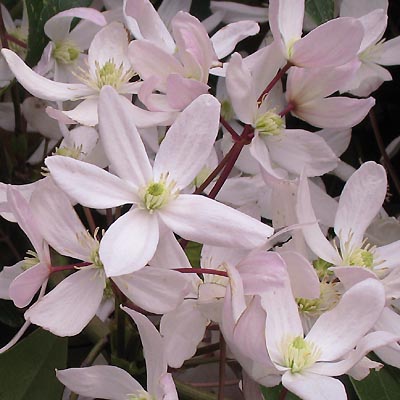
All clematis from the balearica section bloom in this period. The evergreen Clematis armandii and armandii Apple Blossom also bloom from January/February.



